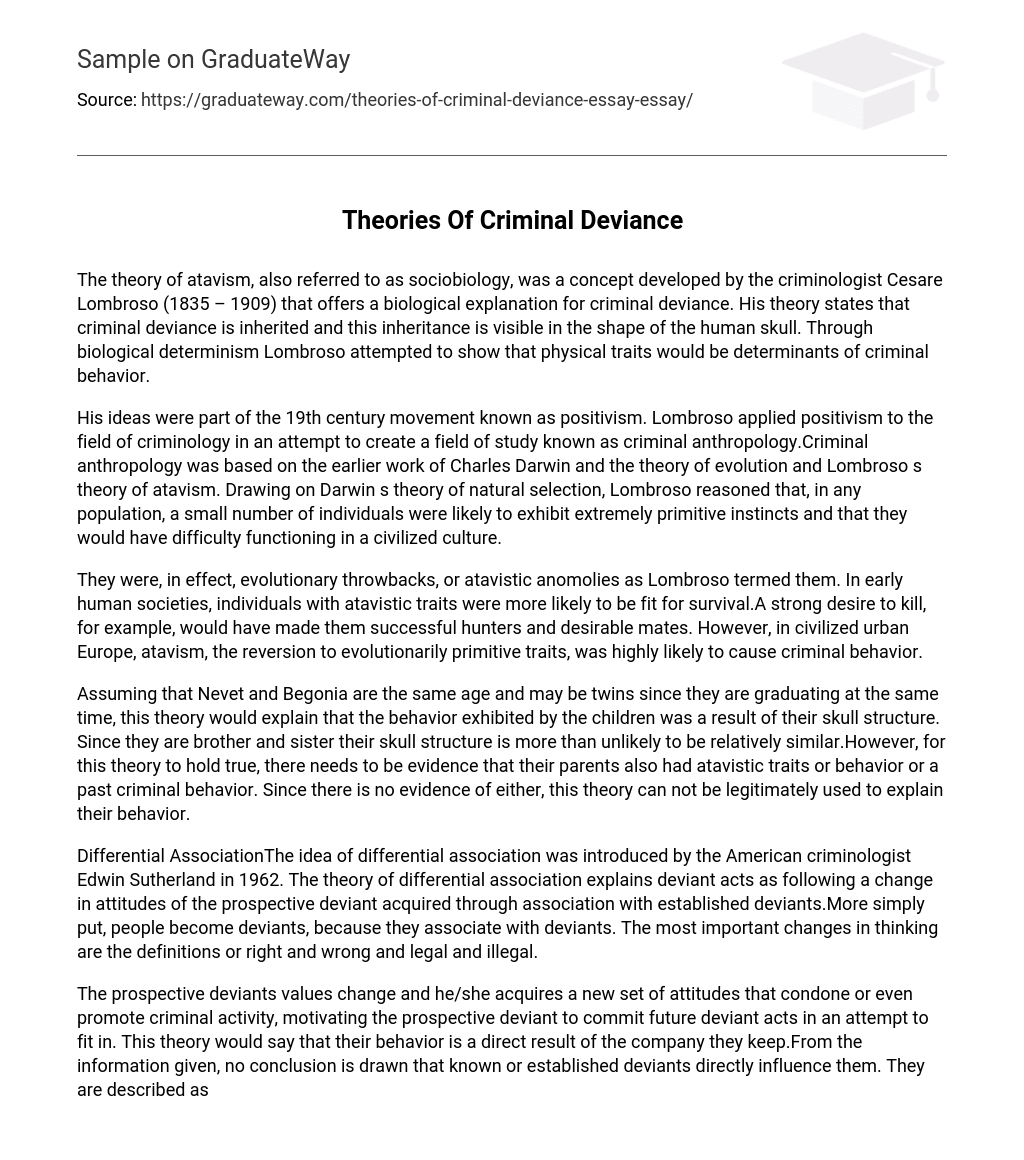The idea of atavism, also referred to as sociobiology, was formulated by Cesare Lombroso (1835 – 1909), a criminologist. Lombroso’s aim was to offer a biological rationale for criminal deviance. According to his theory, criminal behavior is hereditary and can be identified by examining the shape of an individual’s skull. By promoting the concept of biological determinism, Lombroso sought to illustrate that physical attributes have the ability to determine one’s propensity for engaging in criminal activities.
His ideas were part of the 19th century positivism movement. Lombroso used positivism to create the field of criminal anthropology in criminology. Criminal anthropology was founded on Charles Darwin’s earlier work on evolution and Lombroso’s theory of atavism. Lombroso based his reasoning on Darwin’s theory of natural selection, suggesting that a small portion of any population would display primitive instincts and struggle to adapt to a civilized society.
According to Lombroso, they were essentially atavistic anomalies, resembling evolutionary throwbacks. In primitive human communities, individuals possessing atavistic characteristics were better equipped for survival. Their inclination to kill, for instance, rendered them effective hunters and appealing partners. Yet, in civilized urban Europe, atavism— the reversion to primitive evolutionary traits, greatly paved the way for criminal activities.
Assuming that Nevet and Begonia are the same age and potentially twins, their graduation at the same time could suggest that they are twins. This hypothesis posits that the children’s behavior can be attributed to their skull structure, which is likely to be similar due to their sibling relationship. Nevertheless, to validate this theory, there must be supporting evidence indicating that their parents also exhibited atavistic traits or criminal behavior in the past. As there is no such evidence, this theory lacks legitimacy in explaining their behavior.
The concept of differential association was introduced by Edwin Sutherland, an American criminologist, in 1962. This theory suggests that deviant behavior is a consequence of individuals adopting the attitudes of established deviants through their associations. In simpler words, people become deviant by associating with others who already engage in deviant behaviors. The most notable shifts in thinking involve one’s perception of morality and legality.
According to this theory, individuals who are on the path to becoming deviant experience a shift in their values and adopt new attitudes that promote or endorse criminal behavior. Consequently, these prospective deviants feel compelled to participate in future deviant acts in order to gain acceptance from their peers. It is important to clarify that there is no evidence indicating that established deviants directly influence them. Nevertheless, given their high level of popularity, it can be inferred that their interactions with one another serve as the primary influencer on their deviant behavior.
Labeling Theory is a concept created by Howard Becket in 1963. It is a theory that perceives deviance as a label given to behavior and individuals by authoritative figures. This implies that no one is inherently deviant and no action is considered deviant unless society designates it as such. What may be deemed as deviant today can be viewed as acceptable or ordinary in the future or in different regions around the globe.
This theory doesn’t effectively explain Nevet and Begonia’s behavior. Emile Durkheim, a French sociologist from the 19th century, came up with the concept of anomie to describe a situation in society where people are unsure of the expectations placed on them. Durkheim’s study is crucial for understanding deviance as he emphasizes how society can create pressure on individuals. Anomie theory suggests that deviant behavior is a result of the strains embedded within society.
Durkheim’s concept of deviance was influenced by American sociologist Robert Merton’s study. Merton (1956) examined societal strains and identified various ways individuals might respond to such strains, including deviant adaptations. These strains can occur across all aspects of life, leading to diverse (and often deviant) responses. The rebellion response to strain sheds light on Nevet and Begonia’s behavior, suggesting that they were driven to act deviantly due to immense pressure to be perfect.





